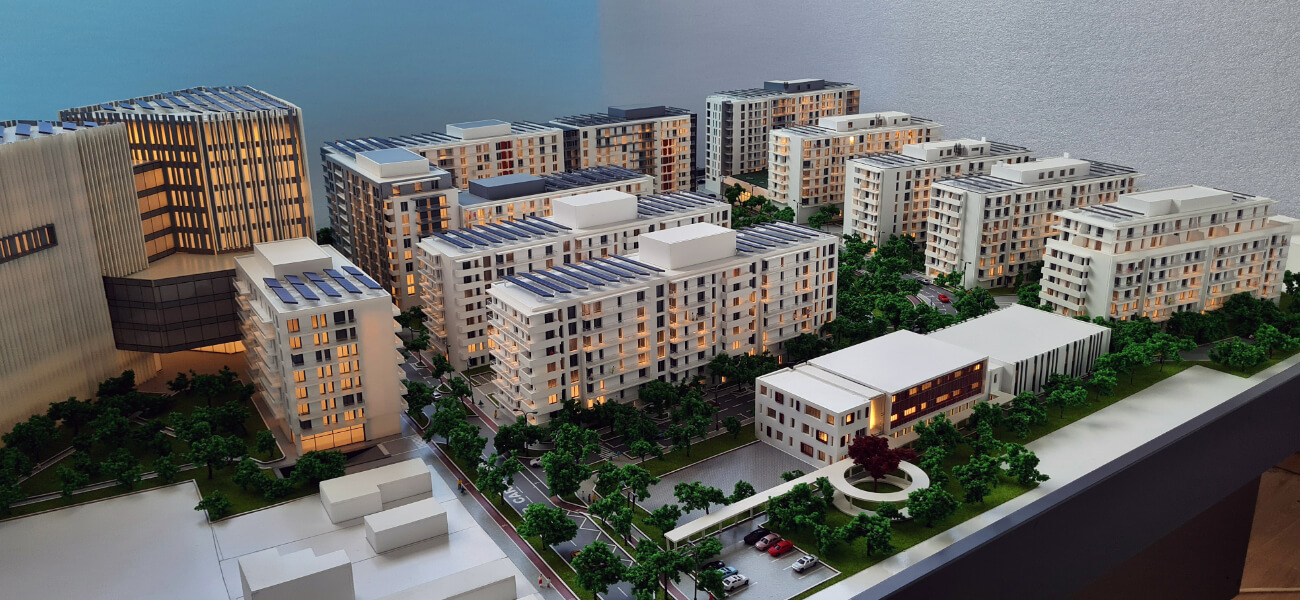Introduction to Architectural Model Making at the Biennale
Architectural model making is a craft steeped in tradition and innovation, blending art and science to create tangible representations of architectural designs. At outlets like the architectural model maker Biennale, this art form comes to life, showcasing the intricate details and creative possibilities of architecture in a highly influential setting. Model making serves not only as a tool for architects but also as a medium for communication, allowing audiences to grasp complex spatial concepts in a more accessible way. As we delve into the world of architectural model making, we will explore its significance within the context of the Biennale and the broader implications for architects and model makers alike.
Understanding the Role of an Architectural Model Maker
Architectural model makers are skilled artisans who create scale models that represent architectural designs, enabling stakeholders to visualize a project before it is constructed. Their work involves translating architectural plans and ideas into three-dimensional forms, which necessitates a profound understanding of both design principles and construction techniques. They must be adept in selecting materials, applying finishes, and even integrating lighting effects to bring models to life, enhancing their functionality as visual communication tools.
The responsibilities of an architectural model maker vary significantly depending on the phase of the project and the needs of the designers or architects. Their tasks can include:
- Choosing appropriate materials and scaling down designs.
- Fabricating models that adhere to strict design specifications.
- Collaborating with architects, engineers, and other construction professionals.
- Innovating techniques for enhanced representation of designs, including detailed landscaping and interior spaces.
- Presenting models during project pitches or public exhibitions.
Importance of Model Making in Architecture
Model making serves multiple essential functions in the architectural process. From conceptualization to final presentation, physical models bridge the gap between imagination and reality. Here are several ways in which architectural model making is integral to the field:
- Visualization: Models provide a three-dimensional perspective of architectural designs, allowing for a clearer understanding of spatial relationships and scale that drawings may not effectively convey.
- Communication: They serve as an invaluable tool for architects to communicate their ideas to clients, stakeholders, and the public, fostering better collaborations and feedback.
- Testing Ideas: Physical models allow architects to test the functionality and aesthetic of their designs, identifying potential issues before they arise during construction.
- Marketing: In competitive architectural firms, stunning models can be the deciding factor in winning projects by impressing clients and juries at design competitions.
Overview of the Biennale and Its Significance
The Venice Architecture Biennale is one of the most prestigious platforms for architectural discourse, showcasing innovative designs and pushing the boundaries of architecture across the globe. This biannual exhibition brings together architects, designers, and enthusiasts from around the world to explore new ideas and celebrate the craft of architecture. With a different theme for each event, the Biennale serves as a reflection of current architectural trends, challenges, and aspirations.
At the upcoming Biennale in 2025, the theme will revolve around “Intelligens: Natural. Artificial. Collective,” as curated by Carlo Ratti, an architect and engineer whose work often embodies the interplay of technology, urbanism, and design. This theme invites participants to consider how architectural thinking can evolve in an age of intelligent technologies and sustainable design. The Biennale is not just an exhibition; it is an environment where the future of architecture is imagined, cultivated, and discussed.
Techniques Used by Architectural Model Makers
Materials Commonly Utilized for Model Making
The selection of materials is a crucial aspect of model making, as it impacts the model’s appearance, durability, and the techniques that can be employed. Common materials include:
- Cardboard: A versatile and cost-effective material for preliminary models, widely used in early design phases.
- Foam board: Lightweight and easy to cut, foam board is popular for creating clean, geometric models.
- Acrylic: Clear acrylic can be used to simulate glass effects, and it is often employed for high-quality presentation models.
- Wood: Real wood or engineered products like plywood provide an authentic look for more detailed models.
- 3D-printed materials: As technologies advance, 3D printing has emerged as an essential method for producing intricate parts with precision and speed.
Tools and Equipment Essential for Success
To bring architectural concepts to life, model makers utilize a combination of traditional and modern tools. Essential tools include:
- Cutters and knives: Precision tools like scalpel knives and box cutters enable clean cuts and detailed work.
- Cutting mats: Protect surfaces and facilitate safe cutting practices.
- Glue guns and adhesives: Essential for assembling materials securely while allowing for adjustments during the construction process.
- Saws: For cutting wood or thicker materials, various saws tempered for model making will provide the necessary efficiency.
- Laser cutters: An important technology that offers high precision in cutting and engraving materials directly from digital designs.
Innovative Techniques in Model Creation
With advancements in technology, architectural model makers continuously adopt innovative techniques that enhance the quality and functionality of their models. Some of the notable techniques include:
- 3D Printing: This technology has transformed the model making process, enabling the production of complex and detailed forms that are difficult to achieve with traditional methods.
- Virtual Reality (VR): By engaging with VR, architects can experience their designs in a simulated environment, which in turn informs the refinement of their physical models.
- Augmented Reality (AR): Similar to VR, AR overlays computer-generated images onto the physical world, providing additional layers of information about the model during presentations.
- Digital Fabrication: Techniques such as CNC milling allow for the precise manufacturing of components, streamlining the model making process and improving accuracy.
The Architectural Model Maker at the Biennale
Key Exhibitions and Their Impact on the Craft
The Biennale acts as a showcase for architectural model making, offering a platform where innovative models are recognized for their craftsmanship and creativity. Exhibitions at the Biennale serve not only to highlight the models themselves but also the stories, ideas, and values they represent. Familiarizing oneself with previous exhibitions can provide insights into the craftsmanship and design philosophies that resonate with audiences today. For instance, exhibitions that showcase interactive or kinetic models can inspire approaches that involve user participation, marrying art with functionality.
Networking Opportunities for Model Makers
The Biennale is an exceptional forum for architectural model makers to network with industry professionals, including architects, designers, and educators. Many attendees look to form collaborations that drive innovation in architectural practice. Engaging with peers and industry leaders enables model makers to refine their practices and stay updated on the latest trends and technologies. Participation in workshops, panels, and discussions facilitates knowledge exchange and opens doors to potential career advancements.
Notable Presentations and Projects
Throughout the years, the Biennale has hosted numerous influential architectural projects and presentations that pave the way for future innovations in the field. These notable projects serve as case studies for model makers, highlighting striking examples of how models can effectively express architectural concepts. For instance, experimental projects that incorporate sustainable building practices often feature models that depict innovative materials and construction techniques, showcasing the feasibility of the designs. Additionally, presentations that emphasize community engagement in architecture further underline the role of models in fostering dialogue about societal issues.
Best Practices for Aspiring Architectural Model Makers
Education and Training Paths
Becoming an architectural model maker requires comprehensive training, as proficiency in design principles and fabrication techniques is essential. There are various educational paths to consider:
- Formal Education: Pursuing a degree in architecture, industrial design, or model making can provide foundational knowledge and skills essential for the profession.
- Workshops and Short Courses: There are specialized workshops available that focus on specific techniques or tools in model making, offering hands-on experience in a focused setting.
- Internships: Gaining real-world experience through an internship can provide practical skills, extend professional networks, and enhance a resume.
Building a Portfolio of Work
For aspiring model makers, a robust portfolio is a critical component for career advancement. A well-curated portfolio not only showcases technical skills but also reflects creativity and personal style. To build an effective portfolio, consider the following strategies:
- Diverse Examples: Include a range of models that demonstrate different techniques, materials, and styles to showcase versatility.
- Detailed Documentation: Provide clear descriptions and photographs of each model, detailing the design process, materials used, and any challenges faced during construction.
- Personal Projects: Engage in personal or pro bono projects that allow for creative exploration and experimentation beyond commissioned work.
Engaging with Industry Trends
Architectural model makers must remain aware of the latest trends in architecture and construction to stay relevant in the field. This can be accomplished by:
- Attending industry conferences, including the Biennale, where emerging trends and innovations are discussed.
- Following architecture publications and blogs to gain insights on recent developments and noteworthy projects.
- Participating in online forums and discussion groups that focus on architectural model making and design innovation.
Future Trends in Architectural Model Making
Technological Advancements Shaping the Industry
The landscape of architectural model making is rapidly evolving due to technological innovations. As tools and techniques improve, model makers can leverage these advancements to enhance their process and outcomes. Key trends include:
- Digital Integration: The seamless integration of digital design software with physical fabrication tools allows for enhanced accuracy and efficiency.
- Customization: 3D printing technology enables bespoke model production, making it easier for architects to tailor models to specific project needs.
- IoT and Smart Models: Some models are incorporating smart technology, allowing them to provide real-time data and enhance interactivity for demonstrations.
Sustainability in Model Making Practices
Sustainability has emerged as a primary concern for the architecture and construction industries, and model making is no exception. Embracing eco-friendly materials and practices can enhance the responsible use of resources in model production. Some sustainable practices include:
- Using recycled or biodegradable materials to construct models, minimizing waste.
- Implementing energy-efficient processes in fabrication.
- Designing models that promote awareness of sustainability in architecture among clients and the public.
Expectations for the Upcoming Biennale Events
As the architectural community gears up for the Venice Architecture Biennale in 2025, expectations are high for innovative presentations that will challenge traditional norms. The interplay between technology and architectural design will likely take center stage, echoing the theme of “Intelligens: Natural. Artificial. Collective.” The integration of AI, smart materials, and a focus on community-driven design solutions are anticipated. Model makers attending the Biennale should prepare to not only showcase their work but also engage in discussions about the future landscape of architecture.
In conclusion, architectural model making is an essential aspect of the architectural process, offering profound insights into both design and execution. The Biennale serves as a vital hub for revealing the possibilities within this craft, allowing model makers to showcase their skills while immersing themselves in vibrant discourse surrounding architecture’s future. As we advance, the synthesis of technology, sustainability, and creative thinking will continue to shape the role of architectural models, reaffirming their significance at events like the Biennale.



